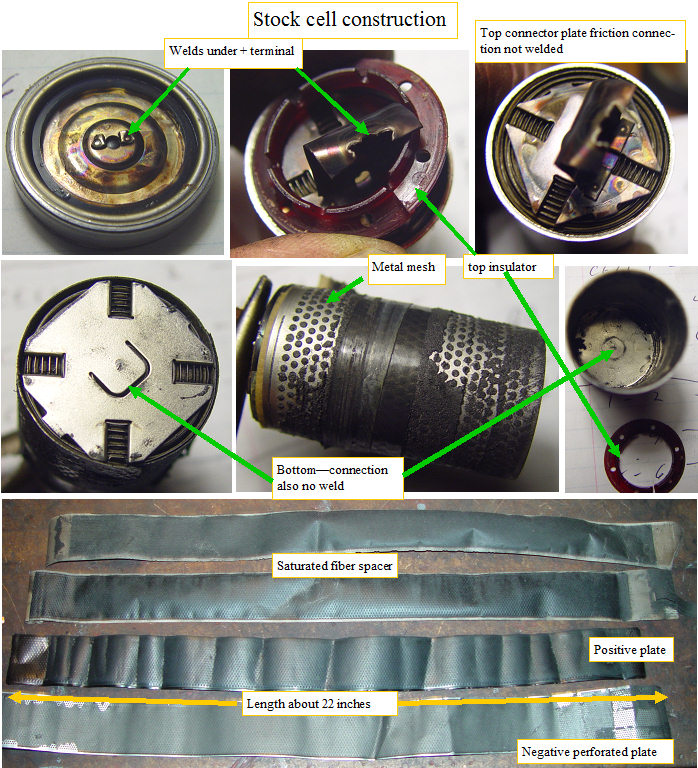Inside the cells
|
 | |
|
Insight 6.5AH cell inside
|
Ok now that I have a good electrical test fixture and have identified a cell that was shorted, recovered, but not back to full capacity, it is time to take a look at the insides of the cell.
The first thing that jumped out at me was the really nice welds. they are deep, show little discoloration in the heat effected zone,with no surface oxides, so they were probably done in an inert gas. The welds were so strong that the sheet metal tore rather than the weld separating.
I made a test fixture to see how much force it would take to "crack" the stick at the cell to cell boundary. Amazingly I was not able to break the welds, even up the the 300 lb max that the scale would take. I had to bend it back and forth 4 or 5 times to get the welds to break out of the metal.
I sanded of the weld stubs, and put the cell in a vice to drain out all the energy.
I turned the cell in my lathe and cut off the top.
The top inner welds were also solid, but I was a bit surprised to find that the top terminal and bottom terminals were simply pressed into the spiral wound plate.The cell must have been assembled in a press to give adiquate contact pressure. I carefully unwrapped the perforated nickle strips which measure about 24 inches. I looked at the plates and separator blotter material, and saw no signs of holes or burned areas(Capacitor Zapp), so this somewhat supports that the capacitor discharge did not blow any holes.Very interesting.
|
|